As crushing only does notgenerally liberate a mineral, further size reduction is usually required. This is achieved by grinding the crushed ore in tubular mills or devices like pan mills or roller-grinder mills. In tubular mills, a grinding media such as steel balls, rods or hard pebbles, impart the forcesrequired for size reduction. On rotating a mill charged with rocks and grinding media, theentire charge rises against the perimeter of the mill in the direction of motion. On reaching acertain height, part of the charge cascades and falls to the bottom of the mill, the other parttends to slips down but soon travels in the direction of motion of the mill. During this process,the media drops repeatedly on to the rock breaking down its size. Some size reduction also takes place due to abrasive forces. As a result of the combined action of repeated impact and abrasion over time, size reduction takes place and given sufficient time the mineral of interest is liberated.
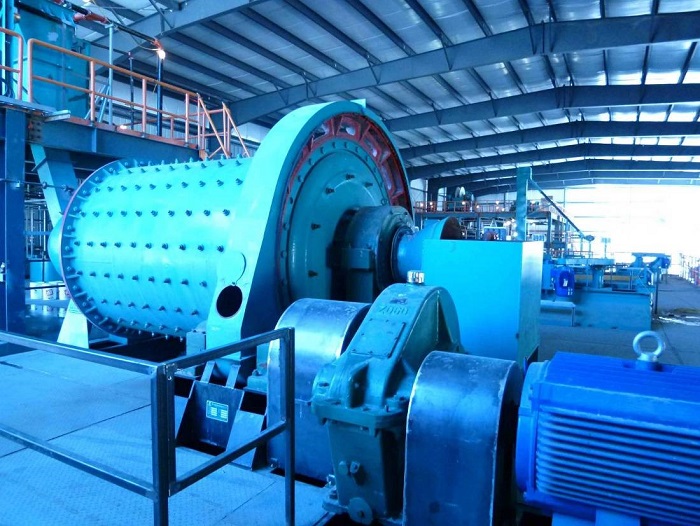
The grinding medium generally used is in the form of balls, rods or cylindrical media called cylpebs. Both steel and ceramic balls are in use depending on the hardness of the rock. For soft ores, pebbles are added or simply autogenously ground with no medium. Both wet and dry grinding is common. Fig. 7.1 illustrates the grinding action inside a tubular mill.
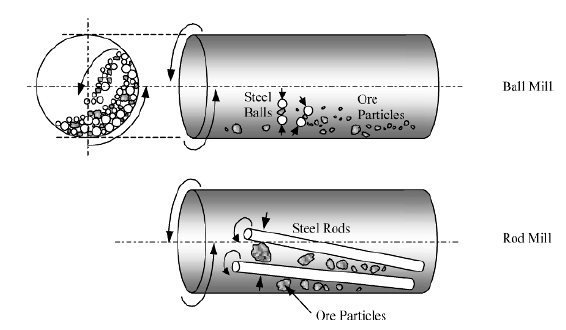
Fig1. Mechanism of crushing in tubular mills
The media used in the charge generally describes a tubular mill. Thus the medium could be steel or cast iron balls when the mill is designated as a ball mill, or it could be steel rods where the mill is known as a rod mill. When no grinding medium is charged it is known as an autogenous mill. we initially discuss the design and operation of tubular mills followed by ball mills and rod mills.
Tubular ball mill types
Rough outlines of three common types of tubular mills are illustrated in Fig. 2. Fig. 2A. shows that the discharge from the mill is by overflow of the contents. It is best suited to fine grinding to 75 - 106 microns. Fig. 2 B indicates a mill where a diaphragm or grate is placed before the exit end so that particles greater than the openings of the diaphragm are not discharged but held back for further grinding. Grate discharge mills give less excessive grinding compared to overflow mills and are best suited to grinds to 150 - 250 microns. In Fig. 2 C the discharge opening is at the centre of the mill, while the feed is from both ends of the mill. The mills are therefore designated as a Centre Periphery Discharge mill.
Fig2. Tubular mill types.
The diameter of the feed trunnion is slightly smaller than the discharge trunnion opening to facilitate flow of slurry through the mill and to prevent the slurry from trying to discharge through the feed trunnion. The double helical scoop feeders are generally used in mills designed to operate in closed circuit with classifiers like rake or spiral classifiers, while the spout feeders are preferred for mills operating in closed circuit with a hydrocyclone as classifier. As a general rule hydrocyclone classifiers are located above the tumbling mills so that the classified course fraction from the hydrocyclones can be fed by gravity into the spout of the mills.
Operation of Tubular ball mill
Tubular ball mills ride on steel tyres or are supported at both ends by trunnions. Girth gears bolted to the shell drive the mill through a pinion shaft from a prime mover drive. The prime movers are usually synchronous motors that operate through an air clutch or gear system. The girth gear is usually located at one end of the mill but depending on the manufacturer, could be located at other places. During rotation, a portion of the charge, (the ore plus the grinding media) is lifted along the perimeter of the shell and after exceeding the angle of repose, part of it slides down while part cascades down and drops to the toe of the shell thus imparting the grinding and crushing actions (Fig.1).
Rod mill
Tubular tumbling mills loaded with rods as the grinding media are used for primary grinding of rocks and minerals. Rods are placed parallel to the length of the mill with their length being about 150 mm shorter than the inside length of mills. The breaking action is almost similar to ball mills but in this case the entire length of a rod is responsible for breakage of particles spread along the length of the mill. The breakage occurs more by a cascading action than by cataracting. The rods fall from a height and roll down the mill so the rods impart an impact force as well as an abrasive action. As the feed enters the mill at one end of the mill there is always a tendency for accumulation at that end, so that the initial size reduction starts more or less at the feed end. With time this action is more spread out along the entire length of the mill. The product size from a rod mill is much more uniform than a ball mill but the overall size is much coarser. Hence a rod mill generally precedes a ball mill in a grinding circuit especially where a fine size product is required. Fig3 is a typical rod mill.
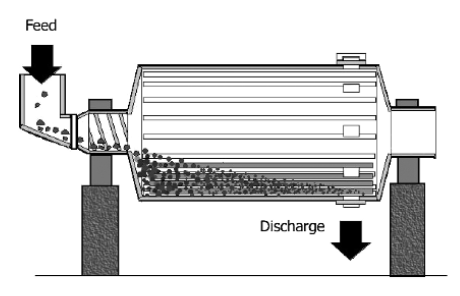
Fig3. Rod Mill with End Peripheral discharge
The cross-section of the rods is generally circular, but rods having square and hexagonal sections have been used. Rods having cross sections other than round do not have any particular advantage on performance. Rods with round sections are possible easier to handle. Liners protect the rod mill shell and are made of rubber or steel and are bolted to the shell with or without rubber backing. The liners are 65 to 75 mm thick and 60-90 mm in height. They have different contours and profiles like waves, wedge bar or rectangular which act as lifters for the charge. The liners at the feed and discharge ends are also made of steel but have smooth surfaces. The headliner and wearing surface could be vertical or inclined as the materials charged into the mill have a tendency to accumulate at the head end and swells. This promotes greater wear to the headliner and also to the rods, which are found to wear down unevenly to almost a fine point in extreme cases. A general observation is that the liner wear in rod mills are much more severe than in ball mills.
The discharge in overflow rod mills falls through a trommel to remove any tramp iron in the material stream.
Ball mill and rod mill circuit
Due to relatively uniform coarse product size and low slimes, rod mill products have been generally used as feed material for ball mills. The comminution circuits are generally arranged to receive crushed ore from a secondary crusher first to rod mills and then to ball mills. The product from the rod mill is either fed directly to a ball mill or to a classifier. The coarser fraction if then fed to the ball mill. The rod mills are normally operated in open circuit and ball mills normally are operated in closed circuit. Some common circuits are illustrated in Figs.4 – fig6.
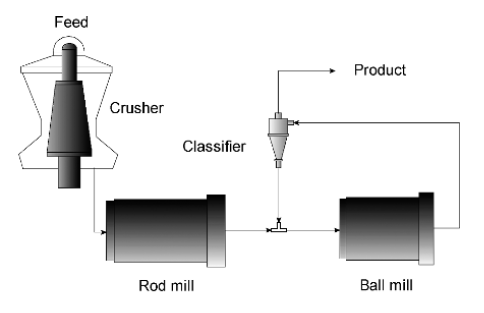
Fig4. Rod mill open circuit, ball mill closed circuit
Fig. 4 shows a flow sheet where the rod mill is in open circuit and ball mill in closed circuit with a classifier. This is a normal set up as the primary function of a rod mill is to provide a uniform sized feed to the ball mill.
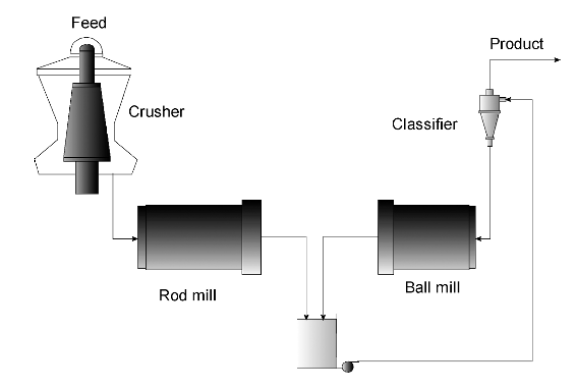
Fig5. Rod mill open circuit, ball mill closed circuit with common discharge
Fig. 5 shows that the rod mill product is classified and a more uniform feed size is therefore discharged to the ball mill whose primary function is to reduce the size of ore, suitable for down stream use. Such a circuit increases the efficiency of the ball mill grinding.
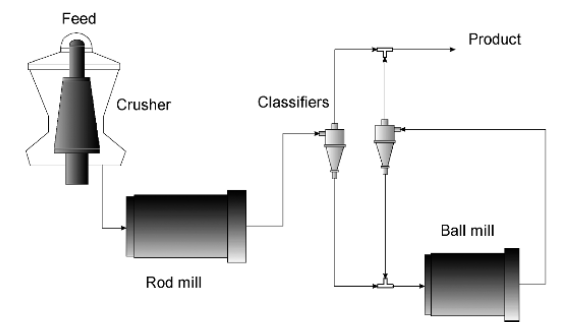
Fig6. Rod mill open circuit, ball mill closed circuit with double classification circuit
Fig. 6shows both rod and ball mill products are subject to classifier action to bring about a more controlled size of the final product.
In some cases open circuit single stage rod mills are used especially where the product is used directly for gravity concentration or for example in the iron ore industry where the product goes directly to a pelletising plant. Closed circuit rod milling is uncommon but may be used where a coarse grind and a tight tolerance is required on any oversize particles in the product.